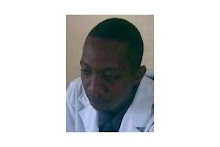Prehistoric Times.Evidence of fingerprints in early paintings and rock carvings are left by
prehistoric humans.
In ancient Babylon, fingerprints are used on clay tables for business transactions.
250 B.C.Erasistratus, an ancient Greek physician, observes that his patients’ pulse rates
increase when they are lying – the first lie detection test.
1100 A.D.Quintilian, an attorney in the Roman courts, proves that bloody palm prints were
left to frame a blind man for his mother’s murder.
1248 A.D.The Chinese book His Duan Yu (The Washing Away of Wrong), describes how to
distinguish drowning from strangulation, the first recorded application of medical
knowledge to the solution of a crime.
1686 A.D.Marcello Malpighi, a professor of anatomy at the University of Bologna, notes the
existence of ridges, spirals, and loops in fingerprints, though he makes no mention
of their value as a tool for individual identification. A layer of skin is named after
him; the “Malpighi layer” is approximately 1.8mm thick.
1813 A.D.Mathieu Bonaventure Orfila, professor of medicinal and forensic chemistry at
University of Paris, publishes Traite des Poisons. Today, he is considered to be
the father of modern toxicology.
1835 A.D.Henry Goddard, Scotland Yard, uses bullet comparison to catch a murderer. His
comparison is based on a visible flaw in the bullet which was traced back to a
mold.
1836 A.D.English chemist James Marsh develops a test for the presence of arsenic in
tissues.
1839 A.D.Dr. John Davy recounts experiments with dead soldiers in Malta and Britain,
using a mercury thermometer. This is one of the first attempts to determine time
of death from a measurement of decrease in body temperature.
1882 A.D.Gilbert Thompson, of the U.S. Geological Survey, uses his own fingerprints on a
document to prevent forgery. This is the first known use of fingerprints as
identification in the United States.
1889 A.D.Alexandre Lacassagne, professor of forensic medicine at the University of Lyons,
France, is the first to try to individualize bullets to a gun barrel. His comparisons
are based simply on the number of lands and grooves.
1891 A.D.Juan Vucetich, an Argentine Police Official, makes the first criminal fingerprint
identification. A woman who murdered her two sons, and cut her own throat in an
attempt to place blame on another, left a bloody print on a door post at the crime
scene, proving her identity as the murderer.
1903 A.D.The New York State Prison system begins the first systematic use of fingerprints
in the United States for criminal identification.
1921 A.D.John Larson and Leonard Keeler design the portable polygraph.
1933 A.D.Teodoro Gonzales of the Criminal Identification Laboratory, Mexico City Police
headquarters introduces the “Dermal Nitrate” or “diphenyl-amine test” in the U.S.
to detect Gunshot Residues (GSR).
1941 A.D.Murray Hill of Bell Labs initiates the study of voiceprint identification. The
technique is refined by L.G. Kersta.
1945 A.D.Frank Lundquist, working at the Legal Medicine Unit at the University of
Copenhagen, develops the acid phosphatase test for the presence of semen.
1953 A.D.James Watson and Francis Crick publish a landmark paper identifying the
structure of DNA.
1959 A.D.Harrison and Gilroy introduce a qualitative colorimetric chemical test to detect
the presence of barium, antimony and lead on the hands of individuals who have
fired a weapon.
1961 A.D.Hungary becomes the first country in Europe to carry out research regarding lip
prints.
1977 A.D.The FBI introduces the beginnings of its Automated Fingerprint Identification
System (AFIS) with the first computerized scans of fingerprints.
1984 A.D.Sir Alec Jeffreys, a research fellow at the Leicester University, discovers a
method of identifying individuals from DNA. Though it is technically referred to
as Restriction Fragment Length Polymorphism (RFLP) he dubs it ‘DNA
Fingerprinting.’
1987 A.D.Robert Melias is convicted of rape – the first person to be convicted of a crime on
the basis of DNA evidence.
1995 A.D.The world’s first national DNA database commences operations in the United
Kingdom.
2001 A.D.Chandra Levy was a Washington, D.C. intern whose disappearance on April 30,
2001 was widely publicized. Police used computer forensics to track emails she
had sent to her parents and to find her location, even though she had been missing
for over a year.
2006 A.D.The Centre for Forensic and Medical Art opens. The aim is to attempt to increase
the accuracy of facial reconstruction methods by analyzing the relationships
between the soft and hard tissues of the face.
 Men are mysterious beings. There is no way women can ever understand men’s logic, just like men can never understand what women want from them. Women typically think of men as strange human beings, whose actions go beyond their understanding. For example, men do not want to meet a woman again after a very good date, they can suddenly disappear and leave phone calls and text messages unanswered, they say that they never want to get married, but then become faithful husbands.
Men are mysterious beings. There is no way women can ever understand men’s logic, just like men can never understand what women want from them. Women typically think of men as strange human beings, whose actions go beyond their understanding. For example, men do not want to meet a woman again after a very good date, they can suddenly disappear and leave phone calls and text messages unanswered, they say that they never want to get married, but then become faithful husbands.
